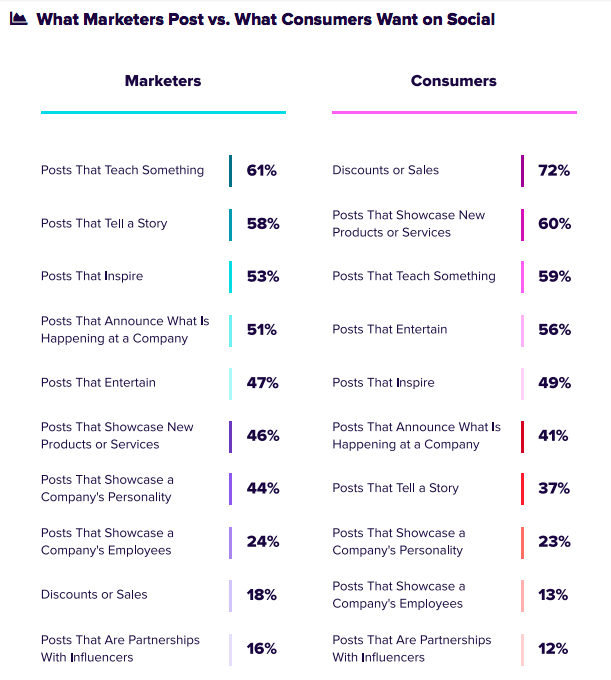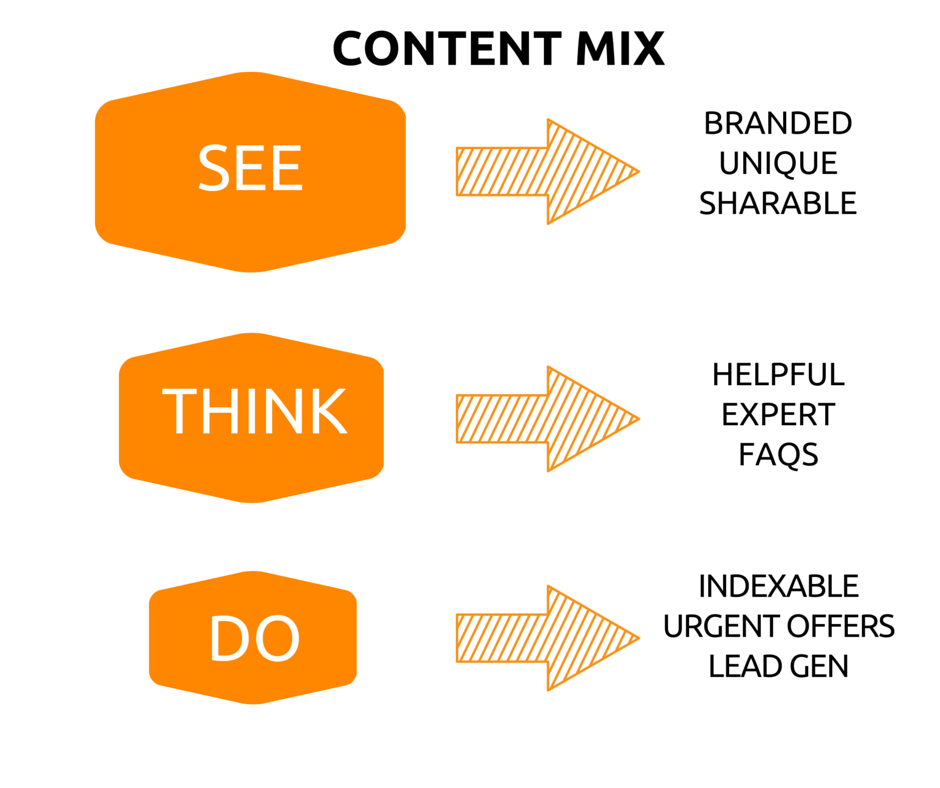 There is a significant chasm between what marketers post to social media and what consumers want to see brands post, according to recent research from Sprout Social. One of the main elements of social media (and running a good business) is to know what your customer wants…and give it to ’em. By the look of the results of the study, social marketers have some work to do.
There is a significant chasm between what marketers post to social media and what consumers want to see brands post, according to recent research from Sprout Social. One of the main elements of social media (and running a good business) is to know what your customer wants…and give it to ’em. By the look of the results of the study, social marketers have some work to do.
The report was based on data from a survey conducted in April-May 2018 among 1,253 consumers and 2,060 social media marketers.
As marketers, we hear about ROI every single day—and social marketers remain anxious about it. To truly understand what ROI means in the social marketing industry, and how social marketers are aligning with consumer preferences, Sprout Social surveyed social marketers on how they approach structure, goals and content. They asked about their priorities and what they need to do their best work. Then they cross-referenced their efforts against what consumers actually want.
Get my latest business tips, exclusive content, and a bit of fun straight to your inbox with the Kruse Control Newsletter. Boost your profits with our proven advice. Sign up now – it’s free!
Social Marketers Missed Opportunities for Reaching Consumers
The study data shows that the top three content priorities for social marketers are misaligned with consumer preferences. Marketers are focused on posts that:
- Teach (61%)
- Tell a story (58%)
- Inspire (53%)
While consumers are looking for:
- Discounts and sales (73%)
- Posts that showcase new products and services (60%)
- Posts that teach them something (59%).

The study also found that consumers want brand awareness and consideration stage content from brands on social media. But 80% of social marketers are hyper-focused on awareness activities, leaving out the consideration piece of the puzzle.
The most effective social marketing strategy integrates awareness and consideration stage content — opening the door with entertainment and inspiration, then carrying audiences across the threshold with education, information about new product offerings and then about discounts and sales.
“Social marketers must produce content that engages consumers at every consideration stage.”
This research reminded me that back in 2013, I wrote about a social media strategy called, “See, Think, Do.”
Avinash Kaushik from Google created the “See, Think, Do” framework and applied it to brand content strategy. I drilled down a bit further by applying it to social media strategy. The “See, Think, Do” approach engages customers and satisfies their information needs across each stage of the buying process.
- “See” stage = people who buy the type of product or service you sell.
- “Think” stage = people who buy the type of product or service you sell and are thinking about a purchase.
- “Do” stage = people who buy the type of product or service you sell, are thinking about a purchase and are ready to buy.
Each consideration stage requires a different type of content to keep buyers engaged.
How “See, Think, Do” strategy works
Step one in your See, Think, Do strategy is to take a good look at what you’re doing today, and start reframing your efforts to fit each customer consideration stage. It starts with a question.
When you create social marketing content and campaigns, which consideration stage are you solving for?
Is it for the audience in the See stage? Is it for the audience in the Think stage? Or, is it for the audience in the Do stage?

“See” stage content:
- Branded, unique, and sharable.
- Entertaining and inspiring (content preferred by consumers).
“Think” stage content:
- Helpful, expert advice, answer frequently asked questions.
- Education (content preferred by consumers).
- Information about new products and services (content preferred by consumers).
“Do” stage content:
- Indexable, lead generating urgent offers.
- Information about discounts and sales (content preferred by consumers).
It’s important to note here that while everyone loves a deal, social marketers should not build strategies solely around deals and promotions. This content, while it leads to conversions, does not build long-term relationships with target audiences.
The best way to understand this and integrate it into your social media strategy is to recognize that the “Do” stage is the smallest group of people. They are likely to buy, perhaps even likely to buy from you, and the reason for that is you’ve done the work to earn their business.
Providing “See” and “Think” stage content plays an integral part in creating “Do” stage customers.
Setting up Facebook ad retargeting campaigns and custom audiences helps social marketers learn more about what the “Do” stage customer is looking for and allows you to give it to ’em.
I’ll have more insights from the study results in the coming weeks.
Sign up for the Kruse Control Newsletter: get my latest business tips, exclusive content, and a bit of fun straight to your inbox. Sign up now…it’s free!
